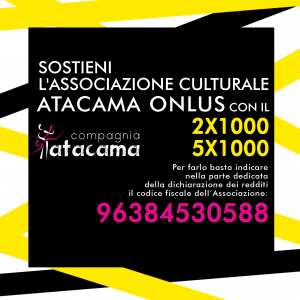The scene, bordered by an evocative circle of kaleidoscopic lights, was animated for almost an hour by living pictures that show moments of human weakness, moments of exhibitionism, relationships, physical contacts, confrontations. In the absence of a logical narrative development, the dancers expressed diverse nuances of human beings in an authentic way, without trying to hide the spiritual flaws and the body’s desires. In most cases laughter was the predominant emotion, the hinge that link the performers’ body and soul.
Irony and self-irony contribute to overcoming the limits of body and soul, as well-known by Patrizia Cavola and Ivan Truol, who directed the choreography drawing the movement out of what the text evokes. The performers’ actions and reactions were meticulous and empathic, and the ideas and solutions of some confrontations were original and authentic. In the unison moments the dance was perfect. The stage contained so much material, both virtual and real. The five performers floated and drowned in several kinds of immersion, all alternated in an organic way. The performance was accompanied by the original music by the composer Sergio de Vito.This music guided the scene and interacted with the dancers. The lighting designed by Danila Blasi deserves a special mention, since it managed to create the right atmosphere and to highlight details and impressions.
Valeria Loprieno
Teatri di Cartapesta


